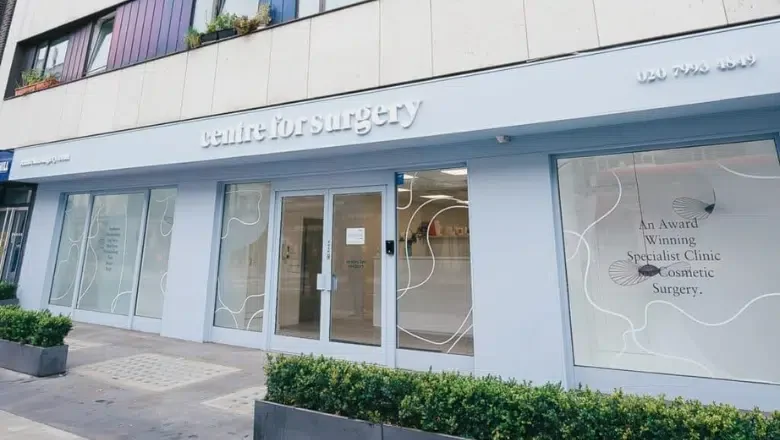As women age, their bodies may undergo various changes that affect the appearance of their breasts. These changes can be due to factors such as ageing, pregnancy and breastfeeding, or fluctuations in weight, leading to a loss of firmness and fullness in the breasts and leaving many women feeling dissatisfied.
While breast augmentation with implants is a popular cosmetic surgery procedure in the UK, it may not be the best option for women with significant sagging or nipples pointing downwards. While implants can restore volume to the breasts and correct minor sagging, more advanced cases may require additional surgical techniques to achieve the desired results.
In such cases, a breast lift, or mastopexy, may be recommended in combination with breast augmentation to address the sagging and improve the overall shape of the breasts. Mastopexy involves removing excess skin and tightening the surrounding breast tissue to lift the breasts to a more youthful and lifted position. This can be done in conjunction with breast augmentation using implants further to enhance the fullness and projection of the breasts.
RELATED: Breast Lift FAQs – Q&A about Mastopexy Surgery
Can you lift your breasts without implants?
Yes, breast lift or mastopexy procedures can lift breasts without the use of implants. A breast lift is a surgical procedure that involves removing excess skin and tightening the breast tissue to lift the breasts to a more youthful position. This technique is particularly suitable for women who have good amounts of breast tissue but suffer from sagging and nipple position issues.
RELATED: Options for Droopy Breasts – Breast Lift, Implants or Both?
While breast implants are often used to add volume to the upper portion of the breast, they are not necessary for every breast lift procedure. Women who desire a more natural look or are happy with their current breast size may choose to undergo a breast lift without implants.
During your consultation with a specialist plastic surgeon, your individual needs and goals will be evaluated to determine the most appropriate course of action. The surgeon will assess the amount of sagging, existing breast tissue, and desired outcome to create a customized surgical plan that meets your specific needs.
Whether you choose to undergo a breast lift with or without implants, it is important to select a skilled and experienced plastic surgeon to achieve the best possible results.
What does a breast lift surgery involve?
Breast lift surgery, also known as mastopexy, is a cosmetic surgical procedure that aims to raise and reshape sagging breasts. The procedure involves removing excess skin and tightening the surrounding breast tissue to create a more youthful, lifted breast contour. Here is a general overview of what breast lift surgery involves:
Anaesthesia
Breast lift surgery is typically performed under general anaesthesia, which means you will be asleep during the procedure.
Incisions
The surgeon will make incisions around the areola and down to the breast crease, and sometimes along the crease, to remove excess skin and reshape the breast tissue. The extent and location of incisions will depend on the patient’s individual needs and the specific surgical technique used.
Reshaping the breast tissue
The surgeon will reshape the breast tissue to create a more lifted and youthful breast contour. They may also reposition the nipple and areola to a higher, more natural location on the breast.
Closing the incisions
Once the desired breast shape has been achieved, the surgeon will close the incisions using sutures, skin adhesives, or surgical tape.
Postoperative care
After the surgery, you will be monitored in a recovery room until you are stable and alert. You will need to wear a surgical bra or compression garment to help reduce swelling and support the breasts during the initial recovery period. You may also need to have drainage tubes inserted to help remove excess fluid from the surgical site.
How long is recovery from breast uplift surgery?
Recovery from breast uplift surgery, or mastopexy, can vary from patient to patient depending on the extent of the procedure and individual healing factors. However, in general, most patients can expect a gradual recovery process with the following timeline:
First few days
You may experience some discomfort, swelling, and bruising, which can be managed with pain medication and ice packs. You should rest as much as possible and avoid any strenuous activities.
First week
You will have a follow-up appointment with your surgeon to check your progress and remove any stitches or drains. You can typically resume light activities, but you should avoid any heavy lifting or strenuous exercise.
First month
Swelling and bruising should begin to subside, and you can gradually increase your activity level as tolerated. However, you should still avoid heavy lifting or strenuous exercise and wear a supportive bra as recommended by your surgeon.
First three to six months
Your breasts will continue to heal and settle into their new position. You should avoid any activities that could put stress on your breasts, such as high-impact exercise or lifting heavy weights.
How painful is a breast lift?
A breast lift, or mastopexy, is a surgical procedure that is typically performed under general anaesthesia. After the surgery, it is common to experience some discomfort and swelling in the breast area, but most patients report only mild to moderate pain that can be well managed with prescribed pain medications.
The pain level can vary depending on individual factors such as pain tolerance, the extent of the surgical procedure, and the individual’s overall health. The surgeon may provide instructions on pain management, such as using ice packs or wearing a supportive bra to help reduce swelling and discomfort.
It is essential to follow all postoperative instructions provided by your surgeon, including taking any prescribed medication and attending follow-up appointments to monitor your recovery progress. To help ensure proper healing, it is also recommended that you avoid strenuous activities and heavy lifting during the initial healing period.
While pain is a normal part of the recovery process, it should gradually subside over time. If you have any concerns about pain or discomfort after breast lift surgery, it is important to contact your surgeon for further advice and guidance.
How long does a breast lift last?
The results of a breast lift surgery, or mastopexy, can last for several years, but they are not permanent. Over time, the natural ageing process, weight fluctuations, and other factors can cause breast tissue and skin to sag and stretch again.
RELATED: How Long Does A Breast Lift Last?
However, a breast lift can provide long-lasting results, especially if the patient maintains a stable weight and follows a healthy lifestyle. The results can vary from patient to patient, but in general, breast lift surgery can provide a more youthful and lifted breast appearance for several years.
It is important to keep in mind that a breast lift surgery does not stop the aging process or prevent further sagging or stretching of the breast tissue. The longevity of the results can also depend on the individual’s skin quality and elasticity, as well as their genetics.
To maintain the results of a breast lift surgery, it is recommended to follow a healthy lifestyle, maintain a stable weight, and avoid any activities that could put stress on the breasts, such as high-impact exercise or heavy lifting. Your surgeon may also provide instructions on postoperative care to help ensure the best possible outcome and longevity of the results.
Is a breast lift safer than implants?
Both breast lift and breast augmentation procedures involve some level of risk and potential complications, which should be discussed in full during the consultation with your plastic surgeon. However, it is generally considered that a breast lift surgery, without the use of implants, is a safer option as it does not involve the risks associated with implants.
Breast augmentation with implants carries a risk of complications such as implant rupture, capsular contracture, infection, and changes in breast sensation. Implants also have a limited lifespan and may need to be replaced at some point in the future. Furthermore, breast implants may interfere with mammogram screening, making breast cancer detection more challenging.
On the other hand, breast lift surgery is designed to reshape and reposition the existing breast tissue without the use of implants. The procedure involves removing excess skin and tightening the surrounding breast tissue to create a more youthful, lifted breast contour. While there are still risks associated with a breast lift, such as infection or bleeding, they are generally considered lower than those associated with breast augmentation with implants.










